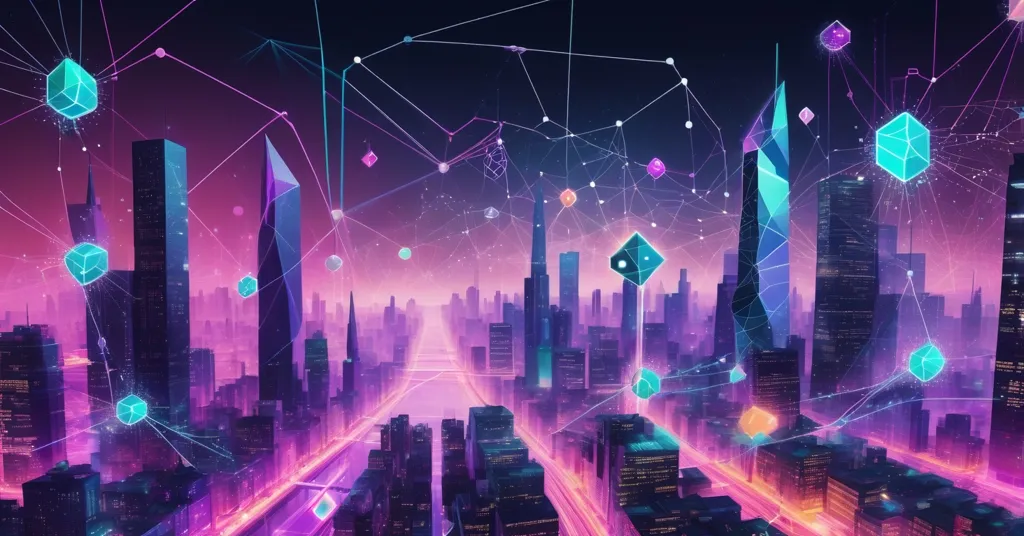Phala Network Ditches Polkadot for Ethereum L2: A Bold Migration Move

Phala Network’s Big Leap: Ditching Polkadot for Ethereum Layer 2
Phala Network, a trailblazer in AI-driven decentralized cloud computing, has just rocked the blockchain world with a decisive community vote to completely abandon Polkadot and migrate to an Ethereum Layer 2 (L2) solution. This bold pivot, set to start before November 20, is fueled by hardware limitations and a thirst for scalability, but it’s not without its skeptics and risks.
- Community Consensus: Phala’s community overwhelmingly approved the shift from Polkadot to Ethereum L2, closing the vote early due to massive support.
- Timeline: Transition begins before November 20, with full rollout phases through November 30.
- Core Reason: Intel’s fading support for SGX hardware forces Phala to seek Ethereum’s scalable infrastructure.
Let’s break this down for the unversed. Phala Network isn’t just another blockchain project—it’s a decentralized cloud computing platform focused on private, secure data processing, often powering AI-driven Web3 applications. Picture it as a digital vault where sensitive computations happen without prying eyes. Launched on Polkadot in 2021 as a parachain (a specialized blockchain tied to Polkadot’s main network for security and connectivity), Phala has been a niche player in the ecosystem. But here’s the rub: its backbone relies on Intel SGX (Secure Guard Extensions), a hardware feature that keeps data private during processing. With Intel now shifting focus to newer tech like TDX (Trust Domain Extensions) and GPU confidential computing, SGX support is drying up. As doylegxd, Phala Network Ecosystem Leader, put it with no punches pulled:
“Keeping it alive would consume significant resources while locking us into an infrastructure with limited scalability.”
This isn’t merely a tech glitch—it’s a harsh wake-up call that even cutting-edge blockchain projects can get kneecapped by the whims of hardware giants like Intel. With about 65 million PHA tokens delegated and nearly 29,000 miners still running on SGX hardware, Phala isn’t making this call lightly. The community vote, initially planned from September 26 to October 15, slammed shut early due to sheer enthusiasm for the Ethereum L2 pivot, as detailed in the recent announcement on Phala Network’s migration. It’s a loud message: most stakeholders see this as the only viable path forward.
Hardware Woes: Why SGX Became a Dead End
Digging into the nitty-gritty, Phala’s reliance on Intel SGX has become a ticking time bomb. SGX is like a fortified safe for data—great for keeping secrets during computation, but outdated as Intel pushes toward TDX and GPU-based solutions that promise better performance and broader support. Staying on Polkadot with dwindling SGX compatibility would be akin to running a high-tech startup on dial-up internet—doable, but a recipe for irrelevance. Ethereum L2, with its maturing ecosystem and lower transaction costs compared to Layer 1, offers Phala a sandbox to integrate these newer technologies without bleeding resources. It’s not just a shift; it’s a survival tactic in a space where standing still means getting left behind.
How the Transition Unfolds
So, what’s the game plan for this seismic shift? PHA token holders will see their assets swapped to vPHA, an ERC-20 token (the standard for Ethereum-compatible tokens), at a straight 1:1 ratio. The process kicks off before November 20, aligning with the expiration of Phala’s Polkadot parachain slot (that leased spot on Polkadot’s network), and wraps up through phased rollouts by November 30. Post-transition, Phala’s L2 will handle the heavy computational lifting for GPU and TDX confidential computing, while staking (locking tokens to support the network) and governance (community-driven decisions) stay secured on Ethereum Layer 1. The migration proposal spells it out clearly:
“Phala L2 will serve as the execution layer for GPU and TDX confidential compute, while staking and governance remain secured on Ethereum L1.”
Operationally, Phala isn’t starting from scratch. Their L2 explorer (explorer.phala.network) and bridge (bridge.phala.network) are already up, letting users move PHA between Ethereum and L2. Major exchanges like Gate.io are syncing up, shutting down Polkadot parachain deposits and withdrawals to prioritize the new Ethereum setup. By November 30, GPU miners will fully operate on L2, earning vPHA rewards, while governance leans on snapshot voting (a gas-free way to gauge community opinion) and safe multisig (multi-party approval for transactions) on L1 for added security. For PHA holders or miners, this means business continues—ideally without a hitch—but with a new address on Ethereum’s bustling block.
What Token Holders and Miners Need to Know
If you’re holding PHA or mining on Phala’s network, here’s the practical scoop. Your tokens auto-convert to vPHA at a 1:1 rate, claimable via the Phala App, with existing delegations mapping over to the new system seamlessly. Miners, brace for a hardware pivot—post-November 30, it’s all about GPU setups on L2, earning vPHA rewards. The bridge and explorer tools are live to ease the jump, but vigilance is key. Blockchain transitions are notorious for glitches, so double-check your wallets and secure your assets. Phala’s team seems to have their ducks in a row, yet no one’s immune to the chaos of moving an entire network.
Ethereum L2: Savior or Risky Bet?
Now, let’s get real—Ethereum L2 isn’t some utopia. Sure, solutions like Optimism and Arbitrum slash costs and supercharge scalability compared to Ethereum’s gas-guzzling Layer 1, but they’re not flawless. Some in Phala’s community are waving red flags, worried about the safety of this leap. Could there be ecosystem risks or technical snafus mid-transition? Damn right, there could. Shifting a whole network is like moving houses during a hurricane—necessary, but messy as hell. And let’s not forget, ditching Polkadot’s interoperability perks for Ethereum’s crowded playground might cost Phala some unique cross-chain mojo. Are they trading one set of shackles for another? It’s a fair question with no easy answer.
Polkadot’s Side of the Story
Before we crown Ethereum the ultimate winner, let’s give Polkadot its due. Its parachain model is a visionary stab at a multi-chain future, letting specialized blockchains share security and talk to each other via a central relay chain. For many projects, it’s a solid home—think Acala or Moonbeam, still thriving there. But for Phala, the fit soured. Parachain slots come with steep costs and fierce competition, and Polkadot’s focus didn’t mesh with Phala’s niche hardware needs. This exit isn’t a death knell for Polkadot; it’s a mismatch of priorities. Yet, it stings to see a promising player jump ship, and it begs the question: are Polkadot’s constraints pushing more projects to look elsewhere?
Community Sentiment: Not All Rosy
While the vote screamed “hell yes” to Ethereum L2, not everyone in Phala’s camp is popping champagne. Scrolling through forums and social media, you’ll find vocal dissenters fretting over migration hiccups or the unknowns of L2 stability. Some miners worry about adapting to GPU setups; others question if Ethereum’s ecosystem, for all its perks, might dilute Phala’s unique edge. It’s not just paranoia—history shows blockchain pivots can trip over bugs or security gaps. Phala’s leadership has the majority on side, but ignoring the naysayers would be reckless. This isn’t a unanimous lovefest; it’s a high-stakes gamble with real stakes for real people.
Industry Trends: Ethereum’s Growing Pull
Zooming out, Phala’s pivot mirrors a larger wave in the blockchain arena. Ethereum, despite its Layer 1 gas fee nightmares, has crafted a killer L2 ecosystem that’s a magnet for projects chasing scalability and a fat user base. Polkadot’s innovative framework struggles with flexibility for niche players or those hit by external tech shifts like Intel’s hardware roulette. Phala’s move signals a growing trend: Ethereum L2s are becoming the cool kids’ table—everyone wants a seat, but is the cafeteria getting too damn crowded? Bitcoin maximalists might scoff, arguing true decentralization doesn’t play popularity games. They’ve got a point—Ethereum’s dominance starts to smell like centralization with extra steps. But for a project like Phala, carving a path in confidential computing (a space Bitcoin doesn’t touch), Ethereum’s toolkit is the pragmatic pick.
Bitcoin’s Lens: A Maximalist Grumble
Speaking to the Bitcoin purists among us, I feel your eye-roll. Another altcoin project cozying up to Ethereum might seem like a betrayal of decentralization’s core. Bitcoin is the gold standard for censorship resistance and store-of-value—untouchable in that realm. But let’s face facts: it’s not built for every use case. Phala’s niche in secure cloud computing, much like other altcoins or protocols, fills gaps Bitcoin wisely sidesteps. Ethereum’s sandbox, flaws and all, fuels experiments that can ripple back to strengthen the broader crypto uprising. Phala’s not flipping the bird at Bitcoin or Polkadot—it’s just playing the hand it’s been dealt in this chaotic game.
Future Implications: Where Does Phala Go Next?
Looking ahead, this transition could make or break Phala’s standing in the decentralized cloud computing space. Landing on Ethereum L2 opens doors to partnerships, liquidity, and developer talent—think potential tie-ups with other L2 innovators or AI-focused protocols. But competitors lurk, and if the migration stumbles, Phala risks losing ground to rivals in this cutthroat niche. Will this pivot cement Ethereum L2 as the default haven for bleeding-edge projects? Or will unseen pitfalls remind us that jumping ecosystems is a gamble, not a guarantee? One thing is crystal clear: in the Wild West of blockchain, adaptability is king. Phala’s rolling the dice, and the outcome could ripple far beyond its own borders.
Key Questions and Takeaways
- Why is Phala Network leaving Polkadot for Ethereum Layer 2?
Intel’s waning support for SGX hardware, critical to Phala’s operations, limits scalability on Polkadot, while Ethereum L2 offers a sustainable infrastructure for future growth. - What happens to PHA tokens during this shift?
PHA tokens convert to vPHA (ERC-20) at a 1:1 ratio, ensuring continuity for staking and governance on Ethereum, claimable via the Phala App. - Are there risks tied to this migration?
Absolutely—community members highlight potential safety issues, technical glitches, or ecosystem risks during the transition, a common hazard in blockchain pivots. - Does this signal a broader exodus from Polkadot?
Not quite. It reflects Phala’s unique challenges rather than a mass departure, though it underscores Ethereum L2’s allure for scalable, cost-effective solutions. - How does this fit with decentralization and disruption?
It embodies effective accelerationism—pushing innovation through rapid adaptation, even if it sparks debate over centralization risks in Ethereum’s ecosystem. - What can other blockchain projects learn from Phala’s move?
Adapt or die. Flexibility and alignment with evolving tech (hardware or otherwise) are non-negotiable in a space where loyalty to one network can become a liability.
For the tech heads and crypto OGs, Phala’s bet on Ethereum L2 isn’t just about dodging a hardware bullet—it’s a masterclass in pragmatic disruption. Staying glued to Polkadot with fading SGX support would’ve been a slow death. Ethereum’s ecosystem, battle-tested and brimming with tools, gives Phala room to flex with GPU miners and TDX integration without choking on gas fees. But let’s not drink the Kool-Aid blindfolded. As with any blockchain switch, users should stay sharp—secure your assets, watch for updates, and don’t assume smooth sailing. Phala’s journey is a raw snapshot of crypto’s relentless pace. Is Ethereum L2 turning into the de facto refuge for blockchain projects on the run? If so, what the hell does that mean for true decentralization? We’re watching every move.



